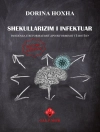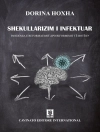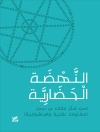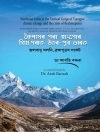The only metric that tracks how much nature we have – and how much nature we use
Ecological Footprint accounting, first introduced in the 1990s and continuously developed, continues to be the only metric that compares overall human demand on nature with what our planet can renew — its biocapacity — and distils this into one number: how many Earths we use.
Our economy is running a Bernie Madoff-style Ponzi scheme with the planet. We use future resources to run the present, using more than Earth can replenish. Like any such scheme, this works for a limited time, followed by a crash.
Avoiding ecological bankruptcy requires rigorous resource accounting — a challenging task, but doable with the right tools.
Ecological Footprint provides a complete introduction, covering:
- Footprint and biocapacity accounting
- Data and key findings for nations
- Worldwide examples including businesses, cities, and countries
- Strategies for creating regenerative economies
Whether you’re a student, business leader, future-oriented city planner, economist, or have an abiding interest in humanity’s future, Footprint and biocapacity are key parameters to be reckoned with and Ecological Footprint is your essential guide.
AWARDS
- SILVER | 2020 Eric Zencey Prize
- SILVER | 2019 Nautilus Book Awards: Ecology & Environment
- FINALIST | 2019 Foreword INDIES: Ecology & Environment
Tabella dei contenuti
Prelude
Footprint — Why? (Introduction)
Part I: Footprint — The Tool
1. Area as Currency — How Much Biocapacity Does a Person Need?
2. Ecological Hinterland — How Much Biocapacity Does a City Need?
3. Croplands, Forests, and Oceans — How Much Biocapacity Do We Have?
4. One Planet — Ecological Limits and Then What?
5. Footprint as Compass — How Much Biocapacity Do We Need for a Good Life?
Part II: Footprint — Challenges Defining the 21st Century
6. End Overshoot! — Communication Is Key
7. Winners and Losers — Strategies for Countries to Consider
8. Footprint Scenarios — Ways out of Global Overshoot
Part III: Footprint — Case Studies
9. Footprint Calculations — Individuals, Cities, Countries, Products, and Companies
10. Footprint in Architecture and City Planning— Bed ZED, Masdar City, and Peter Seidel
11. China — A New Model of Development?
12. Africa — Protecting One’s Resources
13. Footprint — A Conversation
Acknowledgments: Who is Powering All This?
Glossary
Notes
Index
About the Authors
About New Society Publishers
Circa l’autore
Born and raised in Germany, Katharina Rout received her Ph D from the University of Münster. After moving to Canada, she became a professor of English literature at Vancouver Island University in Nanaimo, BC, and a translator of literary and academic prose from German to English.











